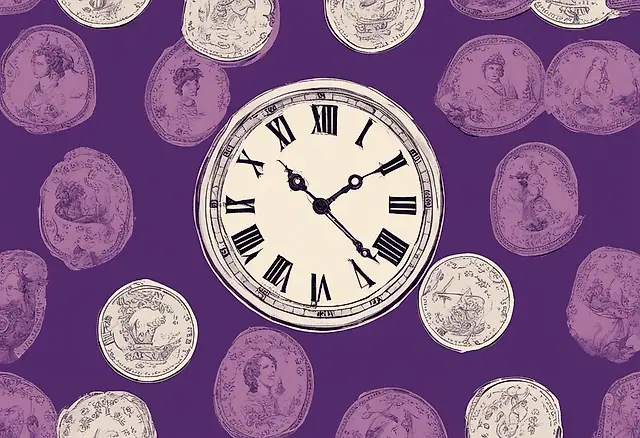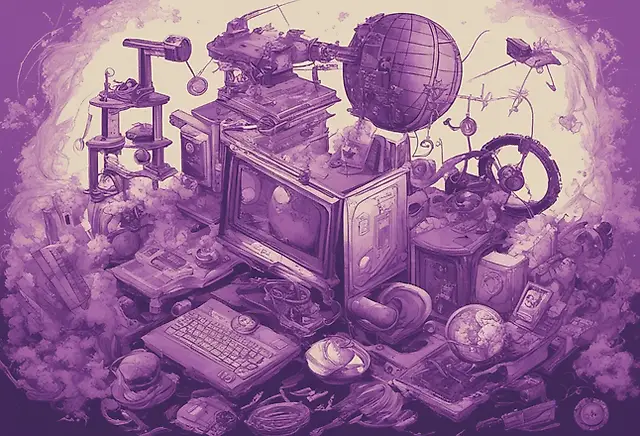The WHY, WHAT and HOW of NOSTR
The article explores censorship and big tech's attention-capturing tactics & information manipulation. It introduces "Nostr" a decentralized social network prioritizing user autonomy & security offering an alternative to social media


Badger • 26 May 2024
The WHY, WHAT and HOW of NOSTR
“Notes and Other Stuff Transmitted by Relays”

Why Nostr?
Historical Context of Censorship
Censorship is a historical phenomenon deeply ingrained in human civilisation, tracing its roots back to recorded history. Throughout the ages, various forms of censorship have existed, ranging from the suppression of political dissent to the restriction of artistic expression. Governments, institutions, and powerful entities have often sought to control and manipulate the flow of information, either to maintain social order but, predominantly, to advance their own agendas. This historical context underscores the notion that censorship has always played a role in shaping the narrative of societies.
The Digital Age Struggle: Navigating the Battle for Our Attention
“Time and attention are the ultimate currencies. There is a reason why we "spend" the first and "pay" the latter.” - Gigi

In the contemporary digital landscape, a formidable challenge has emerged, one that affects us all on a daily basis: the fierce competition for our attention. Today, our electronic devices have transformed into gateways leading us into a sprawling digital realm meticulously designed to keep us perpetually hooked. Among the most prominent culprits are social media applications, which deploy intricate algorithms that scrutinise our preferences and behaviours. These algorithms then craft content tailored specifically to our interests, creating an environment where disengagement seems increasingly implausible. Moreover, the autoplay and infinite scroll features found in short-form video platforms coax us into ceaseless consumption.
In this context, "attention" assumes the role of a highly coveted currency in exchange for utilising what is often labelled as "free services." Big tech social media platforms are at the forefront of this attention-driven paradigm. They employ an arsenal of techniques, sometimes ethically questionable, to ensure users remain entrenched within their ecosystems. Features like infinite scrolling, push notifications, and personalised content feeds are intentionally designed to cultivate a continuous and habit-forming user experience, making disengagement a formidable challenge.
While they offer free access to their platforms, they expertly monetize our time and attention through the strategic display of precisely targeted advertisements. The longer they can keep us engrossed, the more opportunities arise to inundate us with ads, thereby enhancing their revenue streams.
Dergigi strongly captures this idea, emphasising that "time and attention are the ultimate currencies." This idea highlights how important these intangible resources are in the modern digital economy. It's crucial to recognise that this exchange is special because, as we can easily spend our time, we fail to recognise that it can't be replaced or renewed. Furthermore, these platforms wield considerable authority in determining who can participate within their digital domains and exercise discretion over what content is permissible. Although they may establish community guidelines and content policies, the opaque nature of decision-making processes sometimes gives rise to concerns regarding censorship and its implications for free speech.
In summary, the modern digital age is marked by a relentless struggle for our most precious resource: our time and attention. This dynamic is most evident in big tech social media platforms, which deftly leverage our attention as a valuable asset in their quest for profit. While these platforms offer numerous conveniences and opportunities for connection, they also present a host of challenges, including the use of addictive techniques, the opacity of content algorithms, concerns over censorship, and the prevalence of spam and bots. Navigating this intricate landscape requires a keen awareness of the transaction occurring between users and these platforms—a transaction that hinges on the finite and invaluable currency of our time and attention.
The Internet's Information Landscape:
The internet, while offering unprecedented access to information, is also plagued by the proliferation of misinformation, disinformation, and the existence of bot farms. Misinformation is false or misleading information shared without malicious intent, while disinformation is deliberately false information spread to deceive or manipulate. Bot farms, on the other hand, are networks of automated accounts designed to amplify certain messages or viewpoints. These elements have the potential to distort our perception of reality, spread falsehoods, and undermine trust in the information ecosystem.
While censorship has historically been wielded by those in power to control information flow, the digital age has introduced new complexities. The constant battle for our attention, coupled with the challenges of navigating an information landscape filled with deceptive content, presents modern society with a unique set of challenges in the realm of information and communication. As we navigate these challenges, it becomes increasingly important to exercise critical thinking, media literacy, and ethical digital citizenship to ensure that our access to information remains a valuable and reliable resource.
Nonetheless, it's not unexpected that the competition for our attention has led to the prevalence of "you are the product" business models and the widespread adoption of subscription-based walled gardens. These developments are the natural result of the incentive to capture users and their valuable data. Similarly, the prevalence of clickbait headlines and sensationalism should not shock us; they are the organic outcomes of the evolutionary pressure to attract as many eyeballs and occupy as many brain cycles as possible. Is there analternative? Yes.
What is Nostr?
"Governments are good at cutting off the heads of centrally controlled networks like Napster, but pure P2P networks like Gnutella and Tor seem to be holding their own." - Satoshi Nakamoto

Nostr is an acronym which stands for Notes and Other Stuff Transmitted by Relays
Nostr represents an emerging network that operates on a decentralised protocol, offering an accessible gateway for anyone to seamlessly join and promptly engage with a global community of individuals.
Nostr is both novel and intriguing, encapsulating a blend of simplicity and innovation. At its core, it stands as a pioneering open protocol designed to establish a censorship-resistant global "social" network once and for all. What sets it apart are its fundamental principles:
Decentralised Resilience: It operates without reliance on any centralised server, rendering it remarkably resilient in the face of potential disruptions.
Tamper Proof Security: Nostr leans on cryptographic keys and signatures, ensuring the integrity of data and making it impervious to tampering.
Reliable Functionality: In contrast to traditional peer-to-peer (P2P) methods, it offers a reliable and robust framework for operation.
Understanding Protocols: Protocols, much like the principles governing mathematics and language, are neutral systems. They are accessible to all, and no single entity possesses overarching control. This absence of centralised authority is a key factor contributing to the system's resilience.
Capabilities Empowered by Nostr: Nostr introduces several capabilities that enhance the online communication experience:
<u>Versatile Event Formats</u>: It provides a simple and adaptable event format that accommodates a wide range of content types, from social media posts and extensive written content to rich media and e-commerce offerings.
Verified User Identity: Nostr enhances user security by ensuring that all notes originate from specific, identifiable users, thus effectively countering spam and bot-related issues. <u> Censorship Resistance</u>: Users have the freedom to connect with multiple relays and even establish their own. This decentralised structure makes it challenging to suppress ideas or silence individuals.
<u>Integration with Lightning</u>: Nostr seamlessly integrates with the Lightning Network, enabling innovative value-for-value business models that hold the potential to foster greater fairness in online interactions.
Benefits of using Nostr
<u>Autonomy in Self-Expression</u>: Nostr provides users with a unique degree of autonomy in expressing their thoughts, ideas, and opinions, unlike many big tech social media platforms, where content moderation and external measures like de-platforming are commonly employed.
<u>Protection from Debanking</u>: Some big tech platforms collaborate with payment processors or financial institutions, which can result in the suspension or restriction of users' financial accounts based on their online activities. Nostr's decentralised model, by design, reduces the risk of debanking since it doesn't rely on centralised financial intermediaries.
<u>Diverse Perspectives and Voices</u>: By eliminating the need for external measures like de-platforming and debanking, Nostr creates a space where diverse perspectives and voices can coexist. Users are encouraged to engage in discussions and share their thoughts openly, fostering a more inclusive environment where controversial or unconventional viewpoints can be expressed without fear of punitive actions.
<u>Empowerment of User Communities</u>: Nostr's approach empowers user communities to determine their own standards and rules. Instead of relying on a central authority to dictate content moderation policies, users can collectively shape the rules and guidelines that govern their interactions. This democratic approach enables communities to tailor their experience according to their values and preferences.
However, in giving users all these super-powers, always remember what Uncle Ben said to young Peter Parker; “With great power comes great responsibility”
With greater autonomy comes increased responsibility. Users on Nostr are encouraged to exercise self-moderation and promote responsible discourse within their communities. The absence of external measures like de-platforming necessitates a commitment to respectful and constructive communication, reinforcing a sense of individual and collective accountability.
In essence, Nostr's decentralised model provides users with a platform where they can freely express their views, engage in open dialogue, and connect with like-minded individuals, all while reducing the need for external interventions like de-platforming and debanking. This approach not only empowers users but also promotes a more inclusive and diverse digital landscape where the exchange of ideas is valued and protected.
How Nostr works?

The Nostr network comprises two fundamental components: **clients **and relays.
Clients serve as the user interface through which individuals interact with the network, enabling them to both access and contribute data to the system. In the context of social media, think of clients as analogous to the Twitter web or mobile app. These clients facilitate the reading and writing of data to Twitter's centralised database. Learn more about Clients here
Relays, on the other hand, can be likened to databases, although their role extends beyond mere data storage. Relays serve as data repositories where clients can transmit information for storage. Subsequently, clients can retrieve stored data from relays to present to users. Learn more about Relays here
To use Nostr, you don't need to use any personal data.
Every participant within the Nostr network possesses a unique public key. Every action, whether it involves posting a message or modifying a following list, undergoes a digital signing process. Clients play a crucial role in verifying these signatures, ensuring their authenticity.
How to Nostr?
This section addresses how to use Nostr
- Public Key (Username): This key serves as your username and can be shared with others as it's public.
- Private Key (Password): Similar to a password, with one significant distinction. Unlike passwords, private keys cannot be reset if lost. This key must be kept confidential. It grants access to your account across all platforms powered by Nostr.
Typically, public keys are presented as strings prefixed with 'npub1,' while private keys use the prefix 'nsec1.' It is essential to securely store your private key, much like you would with a password. To emphasise, losing your private key means losing access to your Nostr account, and if someone else gains access to it, they can take control of your account. Furthermore, unlike passwords you can not reset your private keys. Keep them safe!
Acquiring your set of keys is a straightforward process. You select a client for the Nostr protocol, such as Snort (web), Damus (iOS), or Amethyst (Android), and it generates the keys for you. For added security on the web, you can use an external signer application like the Alby browser extension or the nos2x extension. You also have the option to generate custom private keys using tools like rana.
Looking for the TL;DR visit heynostr.com
What’s holding you back ride the purple ostrich?
